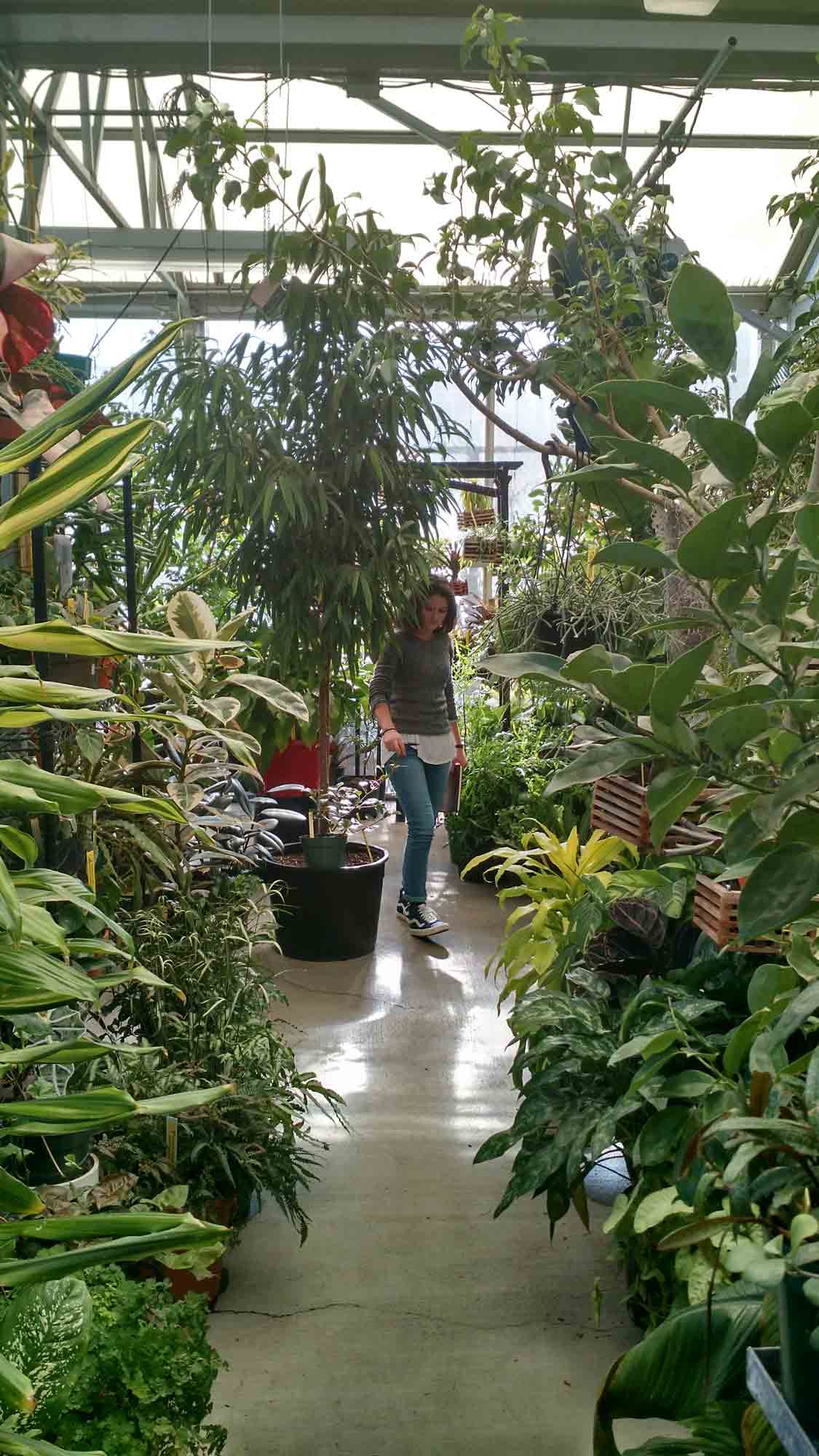The Biology Greenhouse, located at the State Farm parking lot, is used for lectures and labs by the Department of Biology. It is run by Greenhouse manager Gerald “Jerry” Meyer along with Annika Davidson, assistant manager and senior architecture major, and volunteers.
It is difficult to walk through the greenhouse without being brushed by plants. They spread out on every possible surface, including the floors and the ceiling. Most plants are held in the greenhouse, but some are grown in a small courtyard between the rooms of the U-shaped building.
Meyer said he plans to continue adding plants to his collection.
“When I came here 10 years ago there were only about 200 species of plants. I thought it was rather uninspiring,” Meyer said. “It’s now six times that many or around 1,200 species of plants. I’m proud of having virtually every corner of the world represented.”
Meyer specializes in unusual plant anatomy and adaptations. For the botany lab, he pulls out about 40 plants as examples. This includes plants with unique adaptations such as carnivory, sensitivity to touch and mutual relations with ants.
The multitude of unusual plants makes it difficult for Meyer to decide which one he enjoys working with the most.
“It depends on what I’m holding in my hand. All plants have something that will draw me,” Meyer said.
Most of Meyer’s time is spent online searching for more plants. While many can be found from U.S. sellers, he occasionally orders from out of the country. Once a plant arrives, it is labeled with its species name, family name and place of origin.
After the plants arrive, volunteers propagate and maintain plants and perform basic tasks such as sweeping and washing pots. Volunteers propagate by cutting off a small section of the “mother” plant and planting that section. The planted section will continue to grow.
Volunteers also learn about the origin of the plant they are working on.
“I like to force-feed geography on the volunteers,” Meyer said. “When they’re working with plants I have them read the plant label and then question them about the country. They have to come in here, show me where the country is on the map and tell me what the capital city is.”
Davidson was a volunteer before Meyer offered her the assistant manager position. She first learned about the greenhouse from a friend. Davidson volunteered for two years. This will be her first year as assistant manager.
“I really enjoy it,” Davidson said. “Captain Jerry’s hilarious and such a good guy to be around, really makes being here a lot more fun.”
Erica Renner, senior recreation management major, has been volunteering for two semesters.
“I just really love plants,” Renner said. “We do occasionally get to take home like a little something of a plant. But also being around them all morning really brightens your day.”
Renner drives to the greenhouse and spends two hours per week volunteering. The greenhouse is off campus and not well known outside of the biology department.
“I’m glad a ton of people don’t know about it so I can come and volunteer,” Renner said.
Meyer has had up to 24 volunteers, but he now keeps a smaller volunteer staff of 10.
“I recently kept that number down a little bit so I can continue to do all the things I need to do to keep this place running,” Meyer said.
One of the other duties of a volunteer is helping prepare for plant sales through propagation and planting seeds. Through propagation they cut off a small section of the “mother” plant and plant that section. The planted section will continue to grow.
Meyer holds two plant sales per year to fund the greenhouse. The fall sale focuses on succulents and other hardy plants and the spring sale focuses on outdoor garden plants. The diversity in the greenhouse is largely due to these sales.
“Plant sales are cool,” Renner said. “It’s cool to see everything stacked on top of each other. People are like, ‘This one’s mine!’”
Meyer has expanded his teaching to the Boone community through a free class called High Country Gardening. It focuses on outdoor gardening and maintenance. While students are welcome to join, the class caters to homeowners and other community members.
“The building is not used nearly as much as it should,” Meyer said. “All these beautiful plants and they don’t see the light of education as much as I wish they would.”
The biology department plans to build a new greenhouse and conservatory at the old Broyhill Conference Center.
Meyer said he encourages students to visit and tour the greenhouse. The greenhouse is open weekdays from 8 a.m to 4 p.m. Students interested in volunteering can email Meyer at meyerja@appstate.edu.
Story and photo by: Nyctea Martell, A&E Reporter
Featured photo caption: Plants species from nearly every country are represented in the Biology Greenhouse. The greenhouse uses this diversity to teach labs for Botany and Ecology classes.

